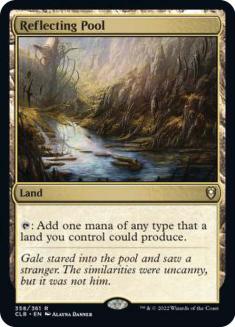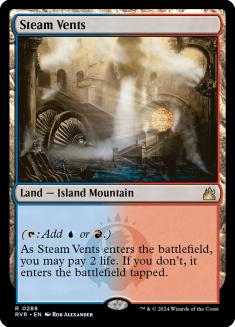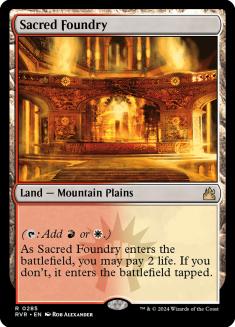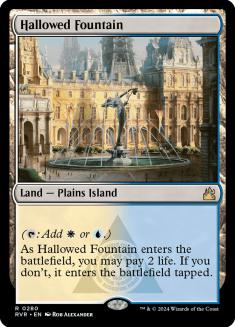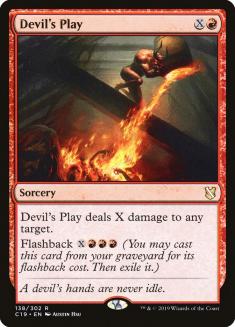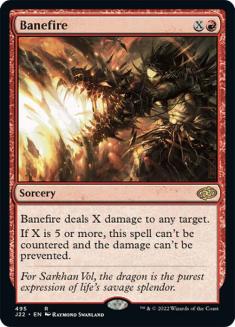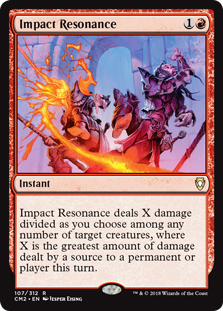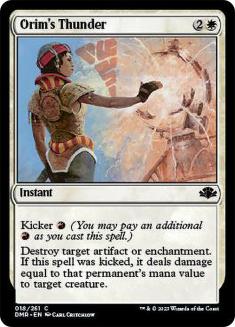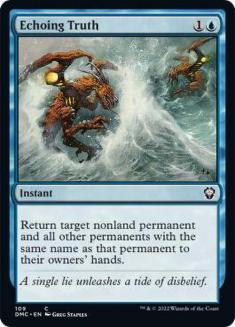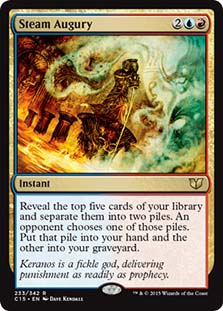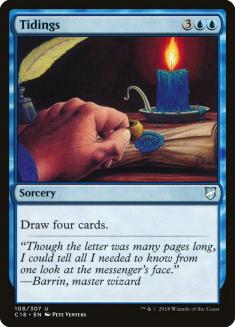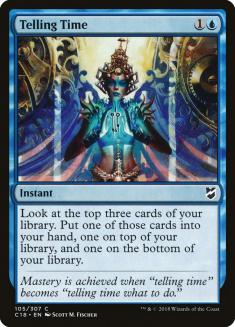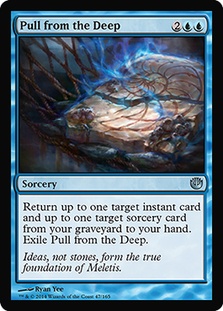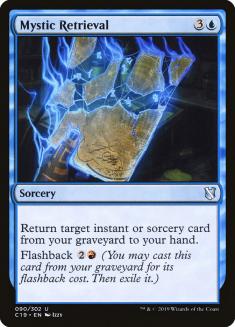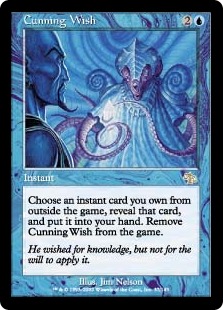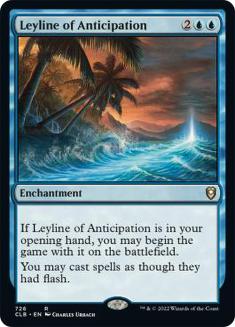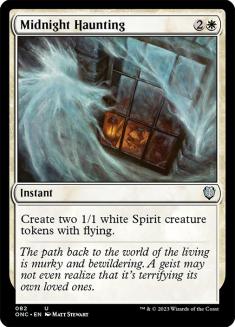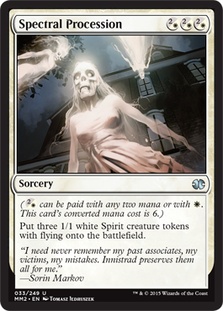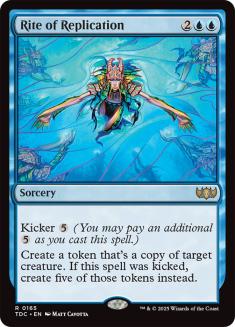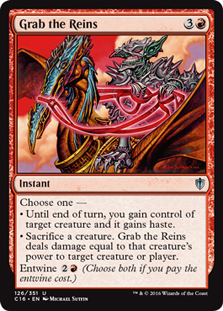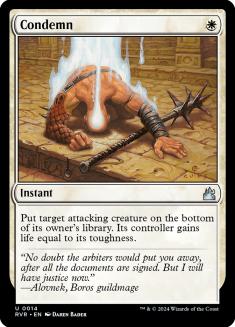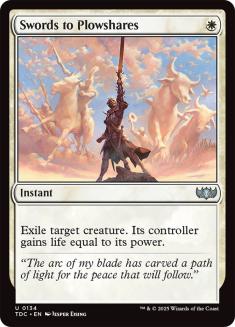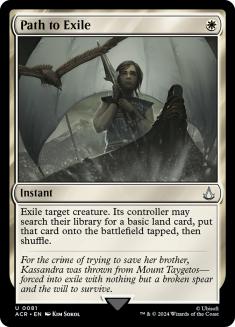Dear Azami,
My local Commander play group has recently taken a turn for the worse. A few powerful control decks have recently taken over the metagame, to the point
that some players have built a lot of un-fun combo decks just to keep up. It’s gotten so bad that a few new Commander players have started leaving the game
store after playing one or two games with the group. I personally prefer a long, interesting game of Commander to an arms race with Zur, Arcum Dagsson,
Daretti, and Jhoira. So I set out to build a deck specifically designed to disrupt abusive strategies that rely overly much on their commanders.
I feel like green, blue, and black are often the biggest offenders when it comes to un-fun decks, but I needed blue for disruption, so I chose Jeskai as my
color identity. Most Narset decks rely too much on their commander to win, so I thought about the other Jeskai commanders, but none of them seemed to be
the right fit. But then they revealed Shu Yun, The Silent Tempest in the upcoming set, and I instantly fell in love. His low casting cost lets you get him
out early, and he can hit pretty hard without a whole lot of effort. But therein lies the problem.
After building the deck with a few choice pieces of equipment to pump him and his flying buddies up, I found that my strategy constantly shifted from my
intended focus, disruption for control/combo, to a Voltron-based strategy. Sometimes I won, but I often wound up over-spending my resources on aggro
without keeping enough in reserve for disruption. I therefore decided to remove seven equipment cards from my deck-but I don’t know what to do now that
I’ve removed the Voltron win condition. I tried adding more card draw, but the deck seems to sometimes just draw itself into nothing (I didn’t include the
added cards on the list).
At the moment, the deck’s main strength is that it gets a lot done without tutoring or relying on any one card. Mana-wise, it’s very color-hungry, so I
didn’t include a lot of colorless land. It interacts well with the decks that it was designed to take on, but it just isn’t quite there yet. Could you help
bring my deck some more focus? Keep in mind that I really don’t care if I win – I just want other players to have a fun game. Here’s the list:
Commander: Shu Yun, the Silent Tempest
7 Island
6 Mountain
3 Plains
Wind-scarred Crag
(7 former equipment card slots)
Overall, I wouldn’t mind adding a bit more disruption and control elements as long as it doesn’t become overly oppressive. I could probably use more
creatures too, since the removed equipment takes a lot of power out of the deck. Feel free to take out any cards – no one card will win me the game, after
all.
Thanks so much for looking over my deck. I’m sure you’ll brew up something wonderful!
– Ben
You’re trying a very fine balancing act, Ben, and it is going to be a challenging one for you to pull off. It sounds to me like you want disruptive
elements that stay in play and keep your opponents from being able to effectively assemble combo pieces, preferably noncreature spells, as then you will
get to attack with a double-striking commander for fun and profit. I honestly don’t think you want much in the way of equipment at all – sure, you get to
double their benefits thanks to your commander’s double strike trigger, but they don’t actually do anything to disrupt the board and are pushing you very
far in the wrong direction. This is more like a tempo-control deck than an aggro-tempo one, and the direction you’ve found yourself wandering is pushing
you further towards mindless aggression.
Mindful aggression, well, that sounds much more like Shu Yun, the Silent Tempest!
We want to be pretty heavily spell-based in order to trigger Shu Yun turn after turn, and we want to play more cards that interfere with combo decks and
more control cards so we can disrupt their big turns – but you don’t want the control side of the deck to be oppressive, which means this will wind up
being more like a Counter-Sliver kind of deck, applying just enough control measures to disrupt a combo player but not enough to shut out normal people
playing fair Magic. For them, well, your commander can hit for eight Commander damage at a time in the later stages of the game, and it’ll come down to
picking a spot and playing through the opposition… you may not win more than your fair share of games, but you should help put the combo decks
in their places enough to let everyone (…else…) play a good, fun game.
Land Equilibrium
We begin with the deck’s mana, which you noted was very color-intensive and might need a bit of work. I think the big problem is actually that so
many of your lands come into play tapped – I’d like to cut that number in half and to get the same color density we’re going to have to throw a fair chunk
of money at the lands in order to up your high-functioning dual land count. First we’ll make some cuts:
Out:
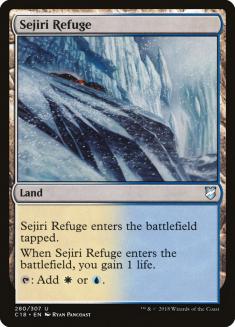
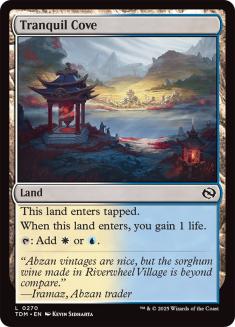
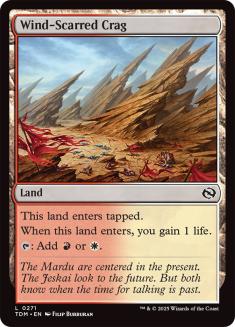
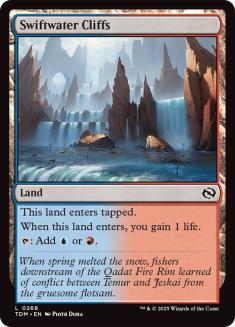
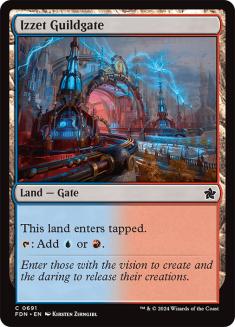

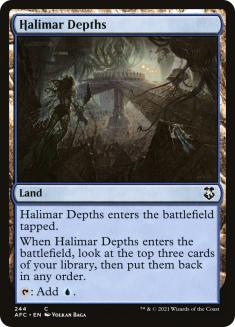
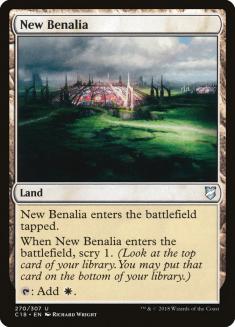
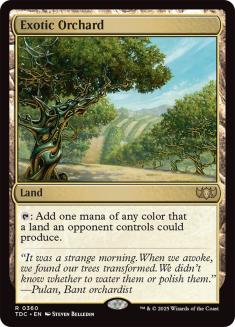

I’d also like to just add another land, bringing your mana count up to 37, and doing so will not change the colored mana density of the deck so we can
afford to add another colorless land if we are so inclined. Adding back in, we get the following:
In:
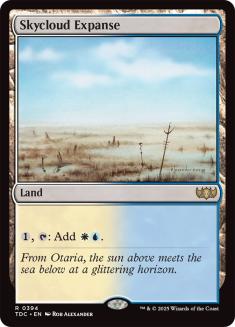
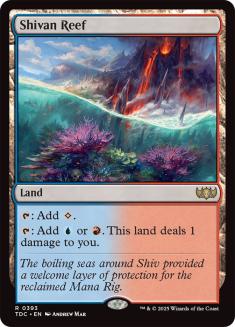
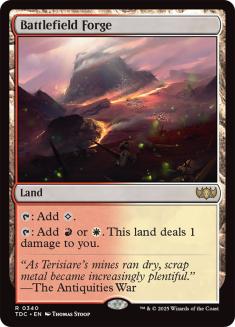
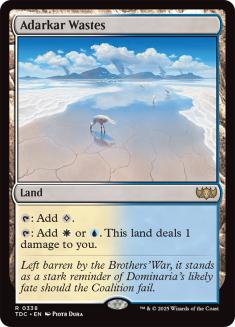
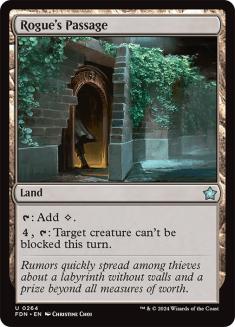

While it’s true that Exotic Orchard has a high tendency to just tap for whatever, this deck needs to be able to rely on its mana producing the
right colors in the right density in order to function properly, so I’d sooner play Reflecting Pool over it and be sure it would always be useful rather
than get stuck with it just tapping for one of our colors of mana and being no better than an overglorified Mountain when we need blue and white mana – or,
worse yet, just tapping for colorless if you’re playing against just black, green, or even colorless commanders like Karn or an Eldrazi. If you
know your playgroup’s colors have a very high tendency to align with yours, then feel free to keep the Orchard – but I’d consider cutting Tolaria
West to keep it instead of swapping out one of these additions, since you don’t have too much in the way of utility lands for it to search for anyway.
Adding one land meant I could add one colorless land with a utility effect, and I worried that we’d have a hard time attacking unblocked in the later
stages of the game… thus Rogue’s Passage gets the nod as the appropriate colorless land for this slot. Moving on to the artifacts, we’re going to cut a
chunk of them:
Out
:
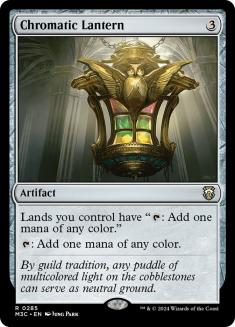
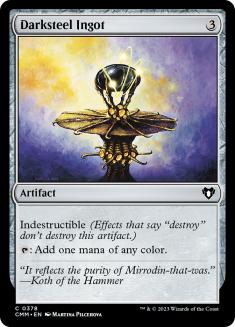
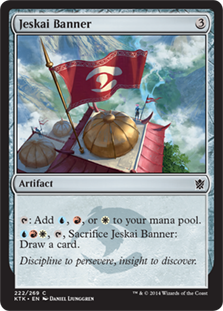
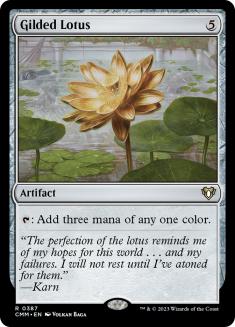
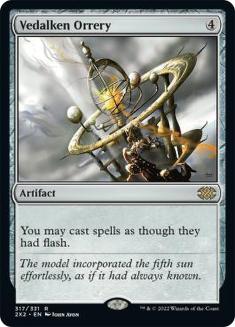

I don’t see much use to these mana rocks in your deck, since you’re actually well-designed to thrive on three mana and none of these can really help to
accelerate your commander or even ramp into stronger control elements – most of your control cards can likewise be played for three or less mana, so three-
or even five-mana ramp rocks are not going to do very much for you. Knowing I was going to cut a chunk of mana rocks, I added a land to compensate – and
we’ll also help make up for this in the spell section, by adding more cantrips that will help smooth your mana draw early in the game and help find more
spells (while triggering your commander) later in the game.
We’ll fill in one fewer slot than we pulled, which gives us a total of eight free slots to fill back in later when added to the seven cut equipment from
before. And the first card we’re adding will in fact be an equipment card… but this one’s not really for you to try and go all Voltron-ish with,
though it can help add to your commander beatdown considerably, it’s here to provide more control spells and disruptive elements on-demand.
In:
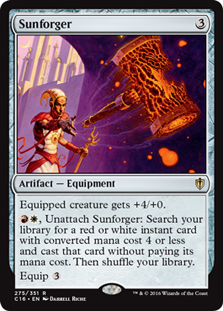
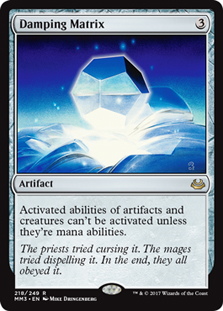
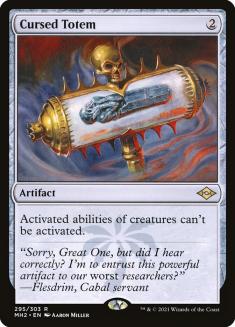
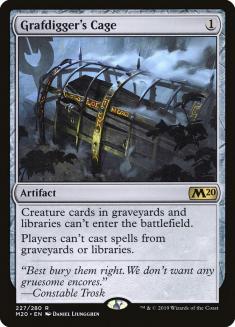

We’re going to try and mess with our opponents’ ability to rely on their commander as a crutch as well as their ability to complete key combos – and these
three disruptive permanents should help make sure our opponents’ plans encounter a monkey wrench somewhere along the way. Conveniently, Shu Yun has a
triggered ability rather than an activated one, so he remains entirely unaffected by Damping Matrix and Cursed Totem – and you’re really not using your
graveyard at all, so Grafdigger’s Cage is just a high-powered way to make sure your opponents play fair Magic (whether they like it or not).
Sunforger can help Voltron your commander up, so you’re killing in two swings thanks to its +4 power and Shu Yun’s double strike, possibly even in one turn
if you pull off a lot of prowess triggers to attempt to one-shot a problem opponent… but that’s really not its role, it’s here to find the right spell
needed at the right time to keep your opponents in check, and we’ll have to manage our spell slots carefully to accommodate for it. You’ve already got
quite a few strong targets, including some of my favorites – for some reason I have a newfound love of casting Boros Charm in Commaner – but we can add
more in order to keep Sunforger high-functioning for longer, as we have access to a few redundant options if we want them.
The Spell’s The Thing
You are playing a prowess-based commander, so it should come as little surprise that “cards that trigger prowess” will be a core element of your deck.
We’re going to do a pretty huge overhaul here, actually, in order to fit more disruptive permanents that will keep combo opponents in check but also to
help smooth the deck’s draws out with cantrips and better card-drawing spells, all of which will help trigger your commander while giving you another card
in your hand to keep doing other stuff with. We’d like to trigger Shu Yun frequently and cheaply, and that means prioritizing cheap spells as we rebuild
this segment of your deck.
Out:
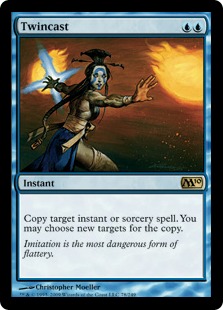
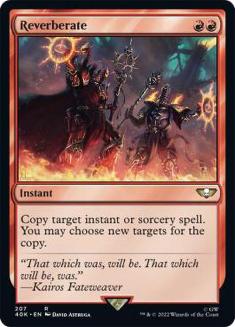
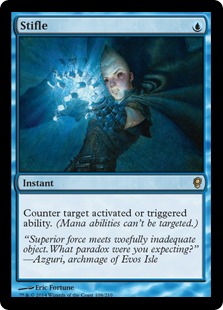
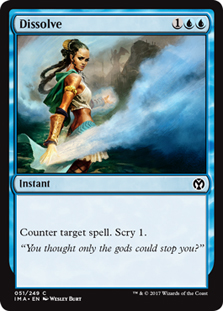

This is a pretty deep re-working – we’re cutting more cards than we’re keeping – but that’s because your commander thrives on a solid spell base, and
successfully breaking up combo players’ machinations can take a fair amount of work. With both of those in mind, we add back in the following:
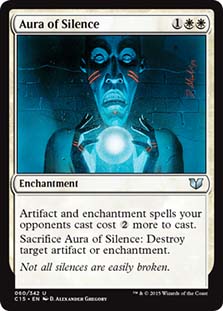
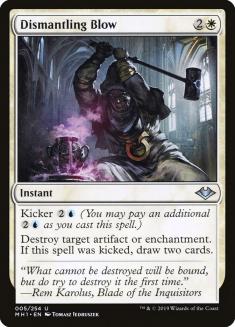
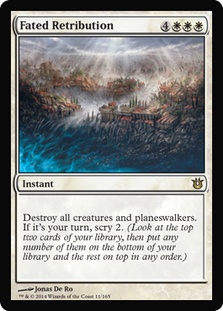
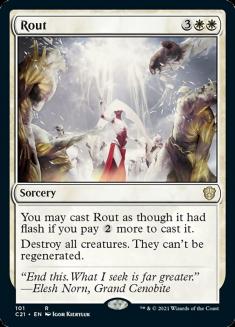

This significantly increases your removal package, including another removal card that is very strong against players that are reliant upon their commander
– if you really want to go down that route, hitting a critical mass of cards will make sure that it’s something you can do each game, so each copy
of a card like that we add significantly increases your likelihood of drawing one during a normal game. Maybe some people think tucking their commander is
dirty pool, but we both seem to agree that playing combo decks is dirty pool, so doing bad things in service to a good cause makes you an
antihero, not a villain…
Aura of Silence helps slow down opposing efforts to assemble combos, not just break them up once they’re in play, and we want at least part of your
gameplan to focus on permanents that sit in play making opponents’ life hard. Not every one will stop every opponent, but if we can hit a critical mass of
cards like we can reliably expect to impede opponents who try to assemble and pull off combos. And while we don’t want to have too many Wrath effects,
having those effects at instant speed is critical, so the two sweepers we do add are chosen because of that specific quality.
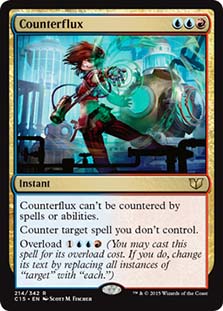
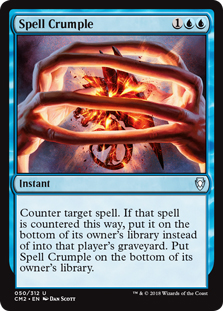
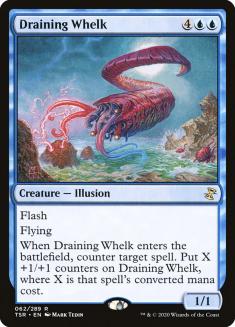
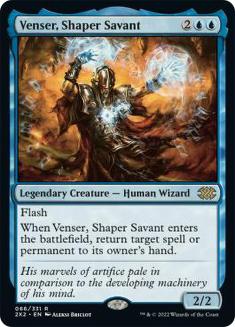
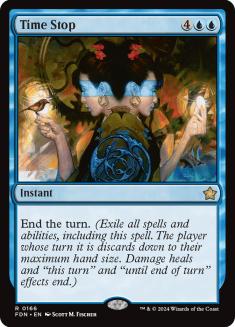

This is your counterspell package – and while we’d normally just discuss noncreature spells here, that line is fairly arbitrarily drawn, and we’re playing
both Venser and Draining Whelk for their counterspell ability, not (just) the body. Draining Whelk’s body happens to attack and block quite well, thanks to
the big spells you can find floating around on the stack in this format, while Venser’s anemic 2/2 stats belie an unusual power on the card itself – it
doesn’t counter spells so much as it just pushes them off the stack, so even uncounterable things or otherwise difficult problems can readily be
handled by the Shaper Savant.
Counterflux is both the end-all be-all answer to breaking up a combo that has opposing countermagic protection, thanks to the fact that it cannot itself be
countered, and it is also the key Counterspell for our Sunforger to find in a pinch – two great qualities that both go great together. Spell
Crumple is another commander-tucking counterspell, adding to that critical mass of mean effects that seem desirable for bringing your unruly playgroup back
into line, while Time Stop can find a corner-case use to stop practically anything that uses the stack – if you are allowed to respond (boo-urns, Split
Second!) you can stop the bad thing from happening, whether it’s an uncounterable spell, an unexpected triggered ability, or even just a lethal attack
swinging your way. And it doesn’t just counter that Obliterate that is bound to ruin your day, it exiles it too, so that problem will never
resurface.
(But as far as that particular problem card is concerned, like I said, I’ve found myself loving Sunforger tutoring up Boros Charm more and more lately…)

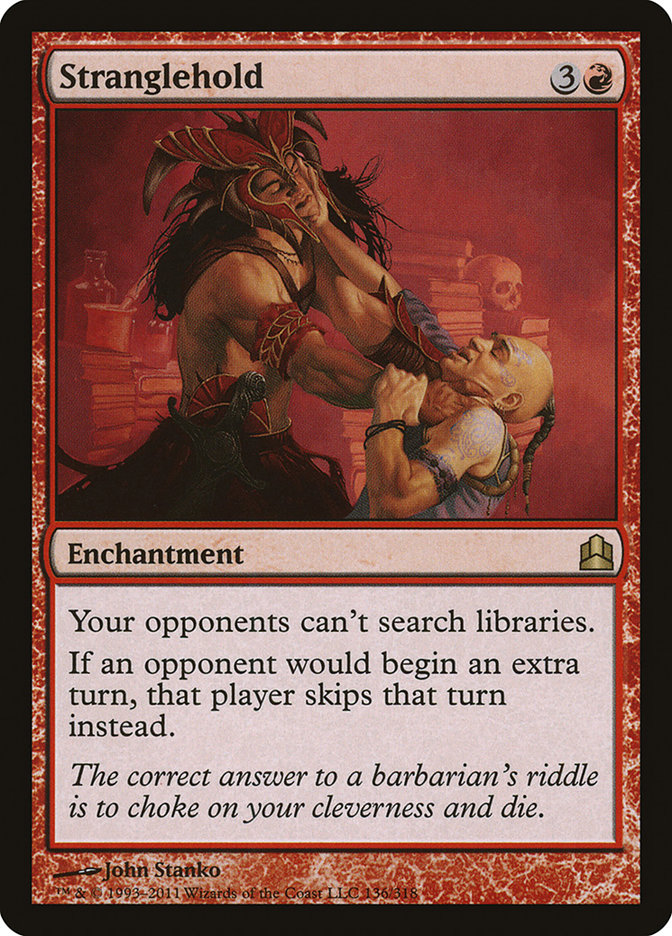
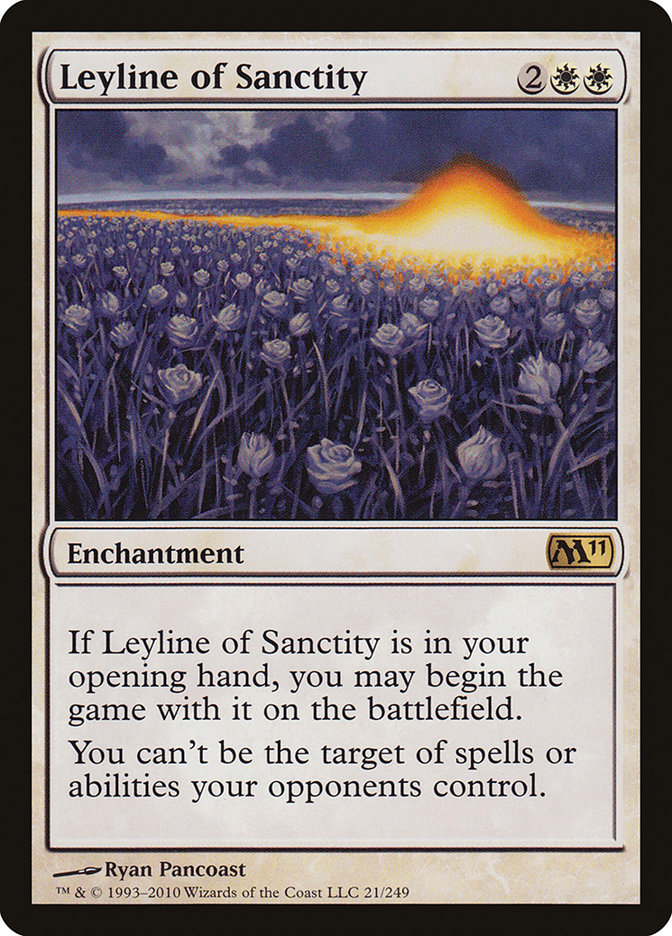
These three are here to sit in play and make opposing plans not work out quite as they’d expected – maybe it’s a combo deck that takes infinite turns or
just leveraging a few key combo pieces and a lot of tutoring , in which case Stranglehold will shut them down. Maybe it’s graveyard-centric, as so many
Commander decks are, in which case they’ll have a hard time dealing with Rest in Peace; maybe it requires the ability to target you in order to kill you,
such as Helm of Obedience plus Leyline of the Void, in which case they’ll encounter a major stumbling block in your Leyline of Sanctity.
None of these cards will be the perfect answer to every situation, but each will make it hard for your opponent to abuse the things we tend to leverage
most often in Commander – tutoring, time, our graveyards.
The last portion of our spell base will fix the card-drawing powers of the deck, since we’d cut a few weaker cards like Steam Augury and Telling Time and
penciled in a plan to upgrade this part of the deck. We’ll commit eight slots to this, and we want a mix of cheap spells that help trigger Shu Yun’s double
strike + prowess ability and powerful raw card-drawers, whatever their mana costs might be.

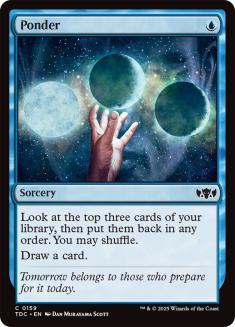
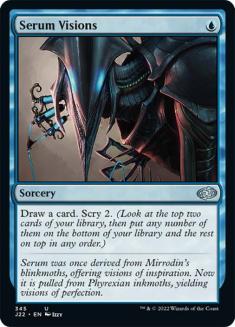
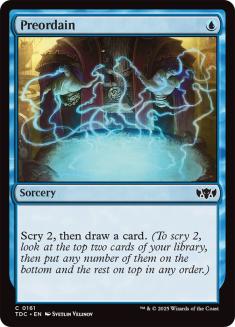
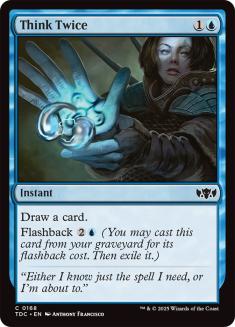

Five cheap cantrips to go with the ones you’re already playing, Impulse and Strategic Planning, should help draw the right cards in the right order with
fair regularity and trigger Shu Yun consistently so you can close the game out still after it’s gone long and resources are more generally
depleted. We aren’t playing a lot of shuffle effects – just Sunforger, Armillary Sphere, and Tolaria West – so our Brainstorms and Ponders are not going to
be the high-powered ones they might be if we had a fetchland-heavy manabase or otherwise did a lot of tutoring and deck manipulation. Think Twice is
generally looked down upon in this format, but it’s two triggers of your commander in addition to two cards, so it’s definitely going to be better than the
Telling Time we cut for it.
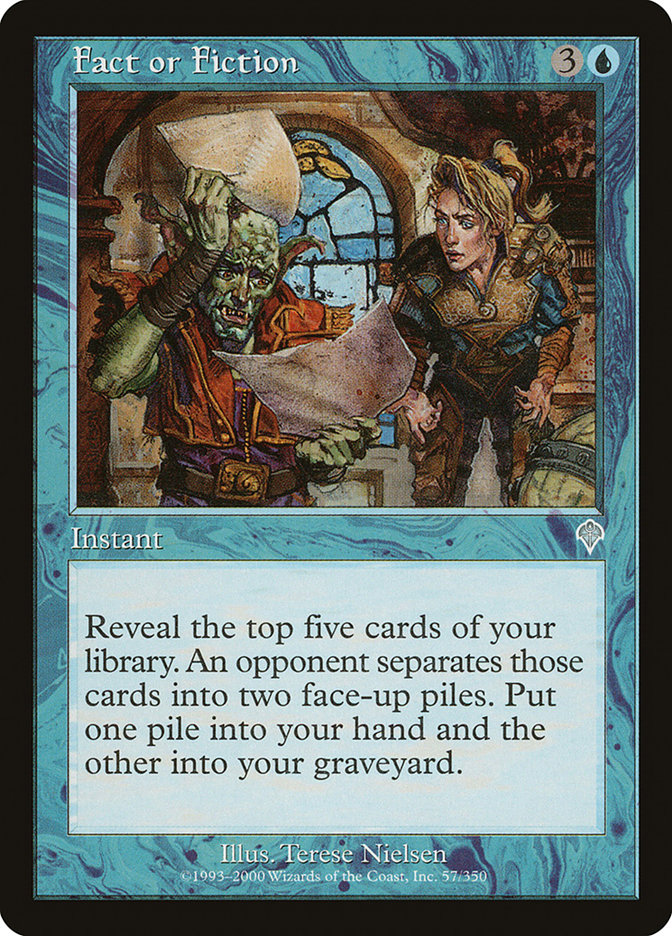
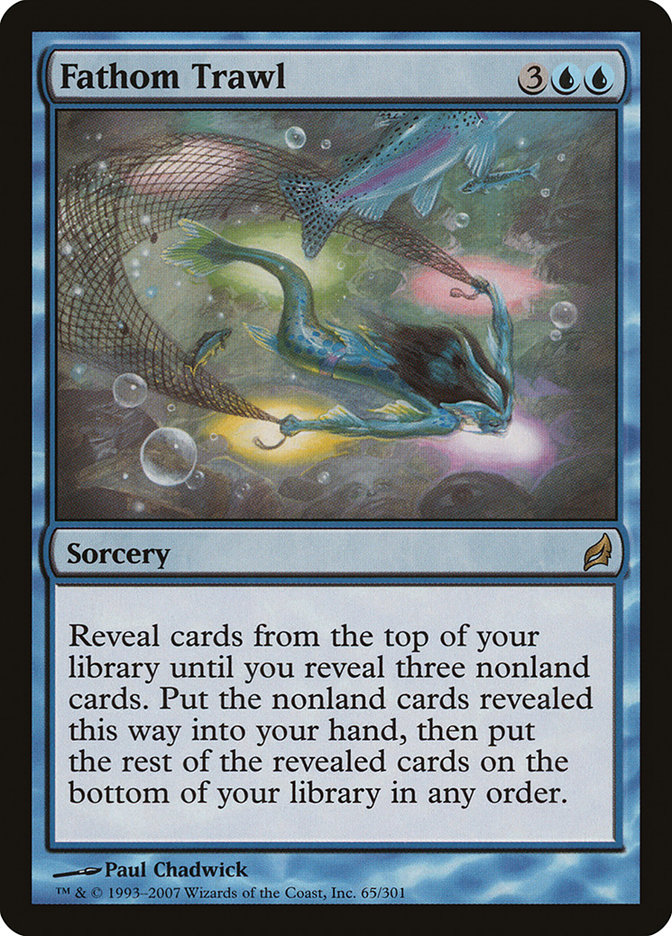

When the effect you are looking for is Fact or Fiction, accept no substitutions. While an argument could be made that Steam Augury is the version you can
Sunforger for because of that added red mana symbol, the fact of the matter is, it’s more powerful to let your opponent make the piles and you
pick which one goes in your hand than the other way around. And let’s face it – if you’re regularly operating your Sunforger, you’re not really going to
need a mediocre card-drawing spell, if you want to Sunforge up some cards in your hand, that’s what the Dismantling Blow is for, and Oblation targeting a
permanent that is currently not pulling its weight would also work to do the same.
Sphinx’s Revelation is obviously Sphinx’s Revelation; we’re presumably well-familiar with the card from its time in Standard and Modern, and I actually
like the bit of lifegain here more than I would the shuffle-in effect of Blue Sun’s Zenith. We have some defensively-minded cards in the deck and a fair
bit of creature removal too but not too much to actually regain lost life points with – it’s not an effect I’d spend a card on, but getting the effect for
free on an already-good card is well worth the selection bias choosing it over the Zenith’s shuffle-in effect or the easier colored mana requirements of
Stroke of Genius. And Fathom Trawl is the one you might not be very familiar with, but I cut the five-mana sorcery-speed Tidings (“draw four cards”) for
one that shares many of the same characteristics – same mana cost, same sorcery speed, but one fewer card in your hand…?
The difference between them is that Fathom Trawl always puts three spells in your hand while Tidings gives you one more card overall – but offers no
control over whether you’re just drawing a handful of lands or getting some action you can actually use. I’ve found the card to be surprisingly effective
and very favorable in decks that aren’t actively trying to get a lot of mana into play, and this is not a deck that is pursuing the usual Commander “sweet
spot” of eight to twelve lands in play, enough to cast a really big spell each turn while still protecting yourself or start casting two big things a turn.
You’ll naturally draw up to the higher mana reaches, but you’re not really trying to get there, so adding a powerful selection bias to your card draw spell
is well worth giving up one card drawn – your average Tidings is probably two lands and two spells anyway, so it’s kind of like Fathom Trawl is the more
powerful card draw spell even though it puts one fewer card in your hand.
Shu Yun’s Superfriends
We still have two slots left to fill out of those seven empty spaces once filled by equipment cards, but first we have six cards to cut before we fill out
the team:
Out:
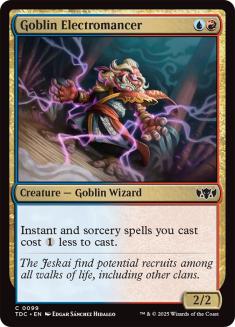
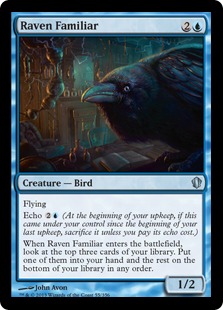
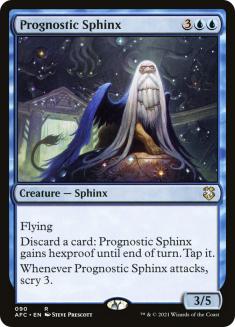
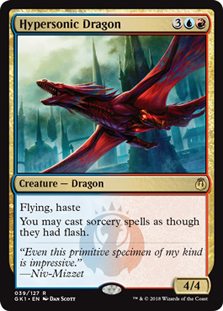
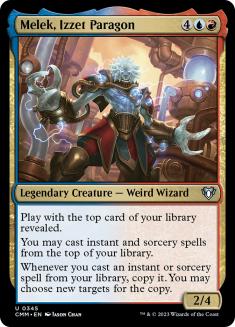


I’ve wound up cutting everything that changes the speed at which you’re allowed to play your cards (…and not even added a Winding Canyons, which is
almost an automatic reflex for me…), and Hypersonic Dragon is going out with the rest of those – I’d rather just play instants when you need them instead
of spend cards on making other cards into instants. Seven of your twenty creatures will have flash by the time we’re done here, and more than half of your
spells operate at instant speed, so we’ll call it “good enough” and not worry about these sorts of cards. Raven Familiar got upgraded into a better
card-drawing spell in the prior section, and Goblin Electromancer is not actually that valuable to us – we’d be saving mana on cards that are already
pretty cheap, and that is not a very high priority. Prognostic Sphinx is card selection but not actually card drawing, and the body gets outclassed very
quickly in Commander, while Melek isn’t actually that good for us – doubling countermagic is of dubious benefit when you’re countering a single spell on
the stack, ditto for doubling Wrath effects and Fogs. Melek’s ability would mostly be worthwhile for card-drawing purposes, letting us draw a few more
cards thanks to his Future Sight effect and getting an extra card for each Brainstorm or Preordain we happen to draw, and that’s not quite worth six mana
for a 2/4 to us. (Of course, he’s obviously just bonkers in a deck that is actually dedicated to him.)
The last cut is Niv-Mizzet, which makes people think you’re going to try and assemble the Niv-Mizzet combo yourself, and we want to be the combo- breaker not the combo-deck so cutting Niv here is mostly to signal that we’re playing fair – in this deck the Firemind would just be
dealing a few damage spread out however you want it every time you played a card drawing spell and acting as a Jayemdae Tome in so doing. For the purposes
of what this deck is trying to accomplish, the Dracogenius would be the better version of Niv-Mizzet for us to play with, so we’ll shift sideways rather
than cut the card.
In:
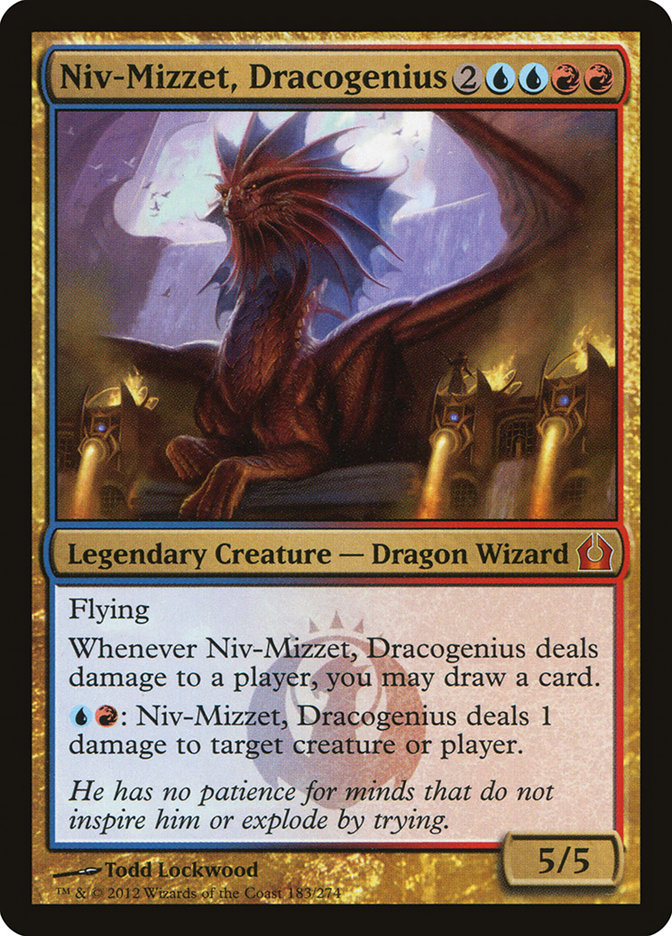
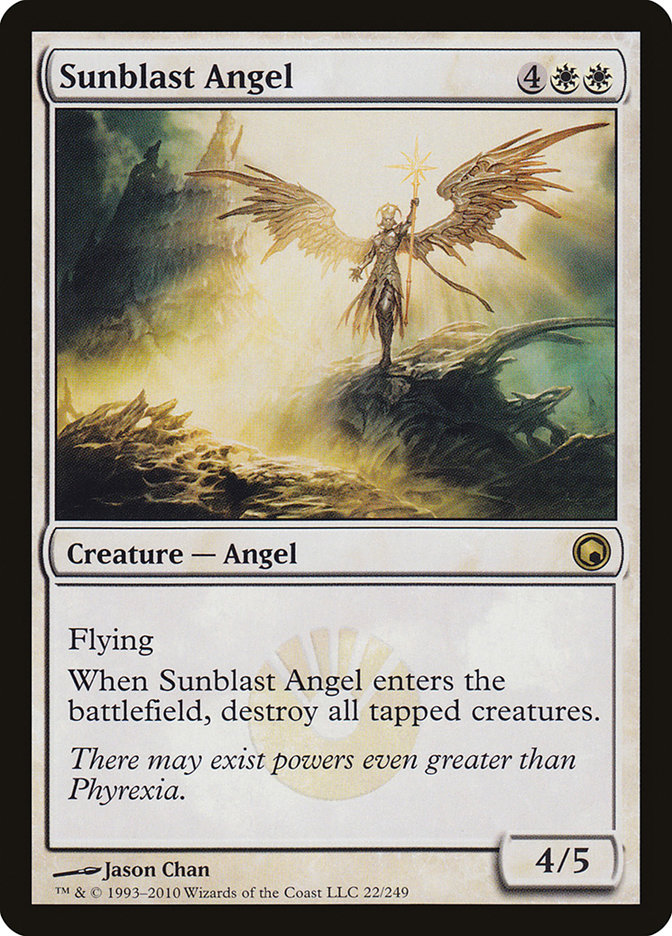

Niv-Mizzet, Dracogenius is here to fill the same role you’d just given to the Firemind, but in what I believe will be the far more effective form given the
needs of your deck. The two Angels are here to provide beatdowns and preferentially sweep the board, taking down enemy creatures while leaving yours alone
and giving you a big flying body as well. We did want some more top-end fliers to close out the game with, but the ones you’d started off with weren’t
quite doing the job.
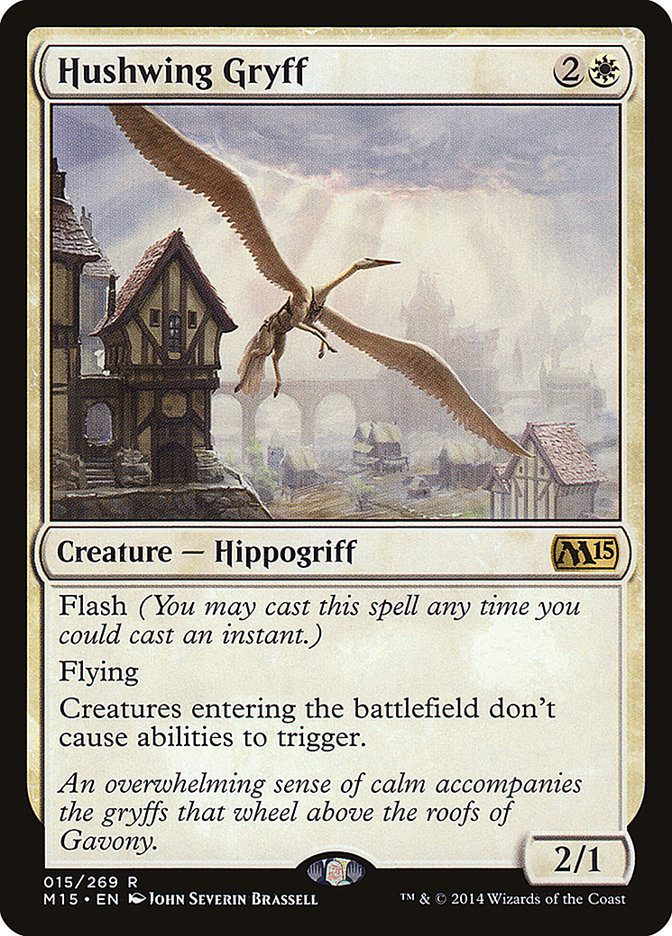
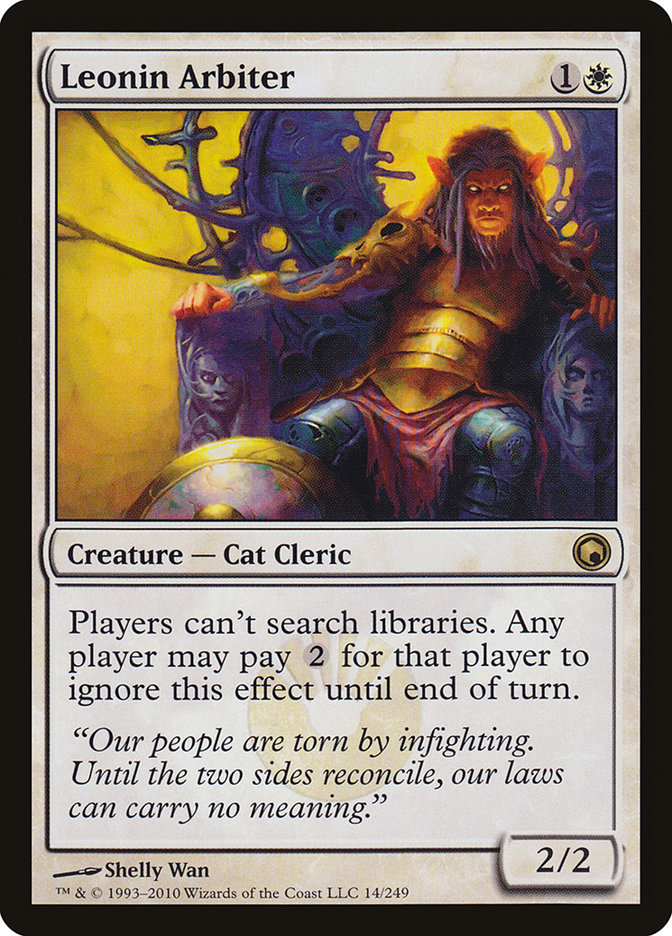
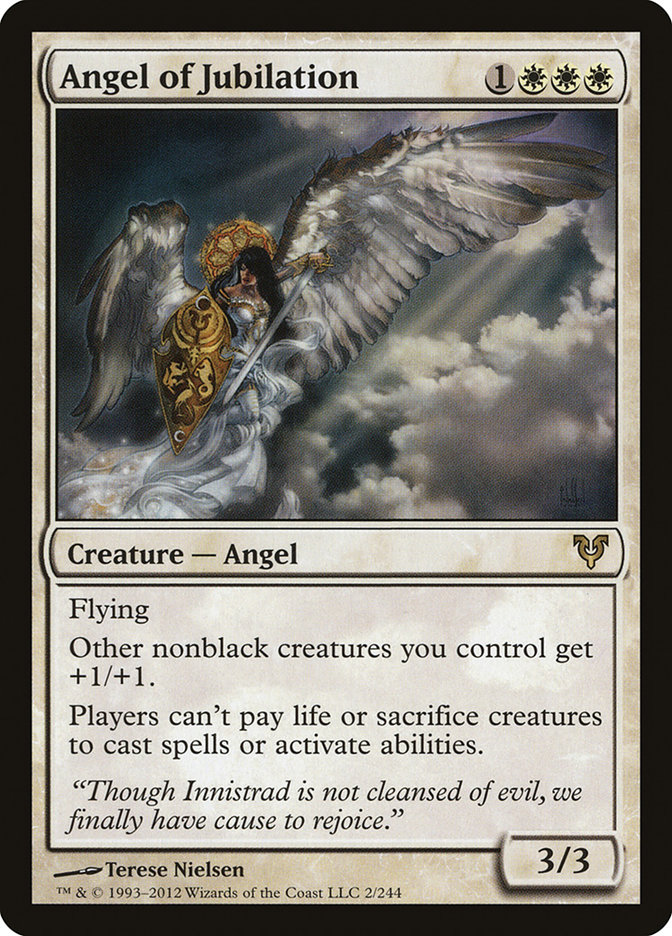
These three are small bodies, it’s true, but they all help reset the rules, and thus, can provide speed bumps to a combo player at the same time as they
tap for beatdown. Hushwing Gryff would stop the triggers on about half of your own creatures, but nothing says you have to keep it around forever if you
don’t want to – this is effectively a flying Stifle when you need to prevent something truly heinous from happening, but if it’s getting in the way of your
Mulldrifting, then it’s done its job and it’s time for the Hippogriff to block. Leonin Arbiter can be circumvented just by paying some mana, so it’s not as
hard of a preventative measure as Stranglehold or even Aven Mindcensor are, but another card helping to do the same job helps make sure you always have something to get in the combo players’ way – and Angel of Jubilation might not be it either, but you’d be surprised just how many things actually
involve a creature sacrifice or trivial life payment in order to pull off. Fetchlands come to mind, as does Force of Will, but the big value comes from
shutting down sacrifice engines – Commander is absolutely full of those, so it’ll shake things up to help prevent shenanigans.
Our last two additions are here to address the fact that we’re not really regaining spent life points, when doing so at a highly-attractive rate might be a
good part of our active self-defense:
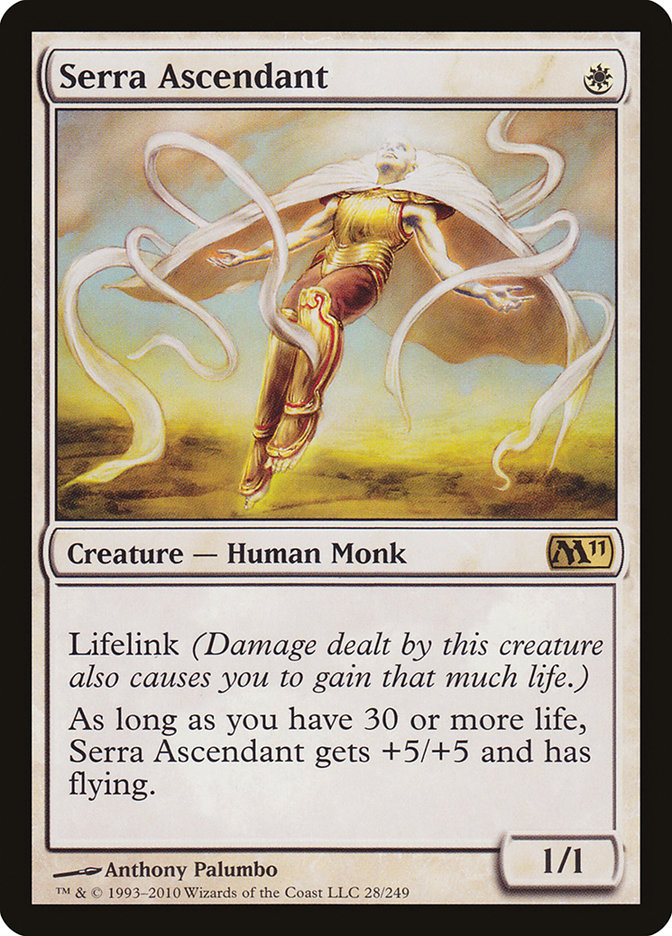
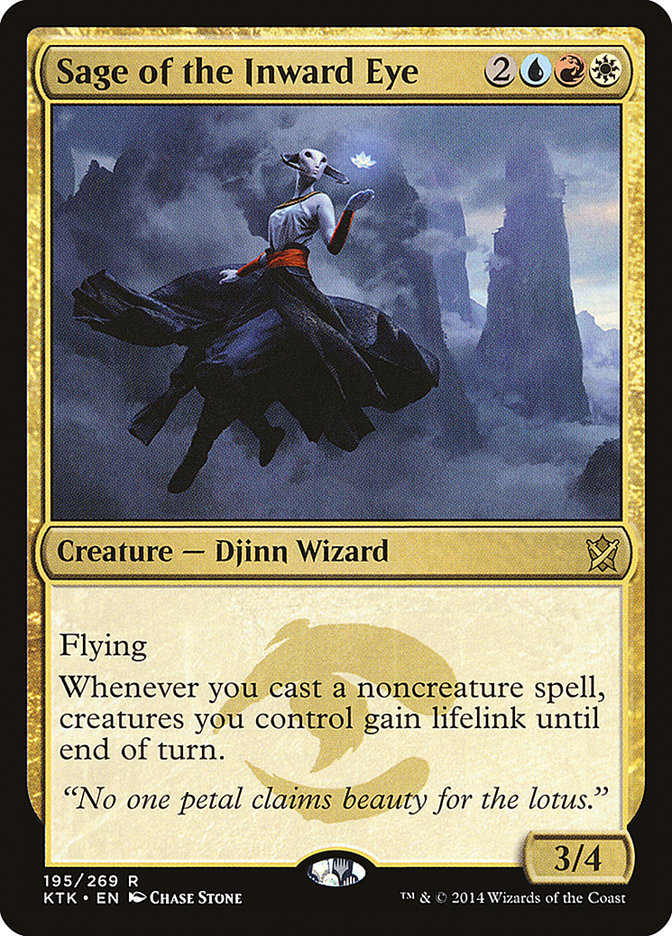
Serra Ascendant is both a super-effective early attacker – to the point where people are upset about the card’s unintentionally-high power level in
Commander, because first-turns 6/6 fliers are stupid – and an effective means for gaining extra resources on the cheap, and that’s even before thinking
about Shu Yen potentially granting it double strike. You don’t have ways to tutor for this or otherwise search it up early in the game, so it’ll just be a
once-in-a-while thing that this comes down too early for it to really be a reasonable card rather than something that’ll keep happening over and over
again. I think the deck could use the power boost and is far more likely to play it in the middle stages of the game, at which point in time it’s still an
undercosted Dragon-shaped creature but at least we’re supposed to have Dragons around then. And Sage of the Inward Eye will help buy back some
life points by swinging with the team, using the same basic guideline for successful use of your commander as the way to turn it on – sure, we could gain life harder by spending one more mana and casting True Conviction, but that’s just one of those cards that immediately dies and
absolutely deserves it so you can’t feel bad when it gets taken out. No one’s going to kill a Sage of the Inward Eye on sight, allowing it to do its job
effectively while flying mostly under the radar.
Putting it all together, we get the following:
Creatures (20)
- 1 Commander Eesha
- 1 Windborn Muse
- 1 Draining Whelk
- 1 Aven Mindcensor
- 1 Venser, Shaper Savant
- 1 Mulldrifter
- 1 Djinn of Wishes
- 1 Sphinx of Magosi
- 1 Serra Ascendant
- 1 Leonin Arbiter
- 1 Sunblast Angel
- 1 Sphinx of Uthuun
- 1 Angel of Jubilation
- 1 Niv-Mizzet, Dracogenius
- 1 Angel of Finality
- 1 Hushwing Gryff
- 1 Sage of the Inward Eye
- 1 Dualcaster Mage
- 1 Angel of the Dire Hour
- 1 Containment Priest
Lands (37)
- 1 Strip Mine
- 3 Plains
- 1 Reflecting Pool
- 1 Adarkar Wastes
- 6 Mountain
- 7 Island
- 1 Skycloud Expanse
- 1 Shivan Reef
- 1 Battlefield Forge
- 1 Sacred Foundry
- 1 Steam Vents
- 1 Hallowed Fountain
- 1 Tolaria West
- 1 Reliquary Tower
- 1 Glacial Fortress
- 1 Command Tower
- 1 Sulfur Falls
- 1 Clifftop Retreat
- 1 Rogue's Passage
- 1 Temple of Triumph
- 1 Temple of Enlightenment
- 1 Temple of Epiphany
- 1 Mystic Monastery
- 1 Arcane Lighthouse
Spells (42)
- 1 Brainstorm
- 1 Hinder
- 1 Counterspell
- 1 Swords to Plowshares
- 1 Sol Ring
- 1 Time Stop
- 1 Impulse
- 1 Aura of Silence
- 1 Serum Visions
- 1 Cursed Totem
- 1 Damping Matrix
- 1 Arcane Denial
- 1 Grab the Reins
- 1 Oblation
- 1 Strategic Planning
- 1 Rout
- 1 Fact or Fiction
- 1 Dismantling Blow
- 1 Deep Analysis
- 1 Sunforger
- 1 Condemn
- 1 Think Twice
- 1 Dawn Charm
- 1 Austere Command
- 1 Fathom Trawl
- 1 Ponder
- 1 Hallowed Burial
- 1 Path to Exile
- 1 Armillary Sphere
- 1 Preordain
- 1 Leyline of Sanctity
- 1 Chaos Warp
- 1 Spell Crumple
- 1 Stranglehold
- 1 Grafdigger's Cage
- 1 Counterflux
- 1 Sphinx's Revelation
- 1 Rest in Peace
- 1 Boros Charm
- 1 Fated Retribution
- 1 Commander's Sphere
- 1 Comeuppance

As always, for participating in this week’s Dear Azami you will receive a $20 coupon to the StarCityGames.com Online store; usually we find
ourselves coming out on a budget of $100 or less, but this week’s additions include a fair number of pricey cards and weighed in at just over $200 thanks
to some expensive lands and “mythic” commons like Serum Visions that serve as the glue holding the Modern format together while desperately awaiting a
reprint in a Theme Deck or Modern Masters II this summer. If you play a fair chunk of current Standard or Modern, you may have some of the more expensive
pieces – but if you don’t, here’s how the individual card additions priced out:
| 0.25 | Condemn |
| 0.25 | Dismantling Blow |
| 0.25 | Grab the Reins |
| 0.25 | Think Twice |
| 0.29 | Rogue’s Passage |
| 0.49 | Fact or Fiction |
| 0.49 | Fated Retribution |
| 0.49 | Fathom Trawl |
| 0.49 | Sage of the Inward Eye |
| 0.49 | Sunblast Angel |
| 0.99 | Counterflux |
| 1.09 | Ponder |
| 1.19 | Brainstorm |
| 1.25 | Preordain |
| 1.29 | Angel of the Dire Hour |
| 1.29 | Rout |
| 1.39 | Damping Matrix |
| 1.49 | Aura of Silence |
| 1.49 | Niv-Mizzet, Dracogenius |
| 1.85 | Cursed Totem |
| 1.85 | Time Stop |
| 1.99 | Angel of Jubilation |
| 1.99 | Leonin Abunas |
| 1.99 | Rest in Peace |
| 2.05 | Sunforger |
| 2.49 | Adarkar Wastes |
| 2.69 | Swords to Plowshares |
| 3.09 | Skycloud Expanse |
| 3.19 | Hushwing Gryff |
| 3.35 | Draining Whelk |
| 4.25 | Grafdigger’s Cage |
| 5.65 | Path to Exile |
| 5.75 | Reflecting Pool |
| 6.19 | Spell Crumple |
| 7.05 | Sphinx’s Revelation |
| 8.19 | Shivan Reef |
| 8.35 | Serum Visions |
| 8.79 | Hallowed Fountain |
| 9.45 | Battlefield Forge |
| 10.79 | Stranglehold |
| 11.49 | Sacred Foundry |
| 13.39 | Venser, Shaper Savant |
| 14.49 | Steam Vents |
| 16.95 | Serra Ascendant |
| 28.89 | Leyline of Sanctity |
I think this will do the job of giving you a good, functional deck with an interesting commander that doesn’t fall towards the “oppressive” side of the Commander control game while effectively preventing most combo decks from just going off in most Commander games – they’ll still get you sometimes, but you should have the right tools to fight back, and that should help you shift the social paradigm that your local play-group has fallen into by stepping outside of the combo “arms race” and playing Sherriff instead. My hope is that it should be a blast to play and get the job done, so that you can have fun doing well while doing good.
Want to submit a deck for consideration to Dear Azami? We’re always accepting deck submissions to consider for use in a future article, like Erik’s Tasigur, the Golden Fang deck or Jaymic’s Alesha, Who Smiles At Death deck. Only one deck submission will be chosen per article, but being selected for the next edition of Dear Azami includes not just deck advice but also a $20 coupon to StarCityGames.com!
Email us a deck submission using this link here!
Like what you’ve seen? Feel free to explore more of Dear Azami here, in the Article Archives! Feel free to follow Sean on Facebook… sometimes there are extra surprises and bonus content to be found over on his Facebook Fan Page, as well as previews of the next week’s column at the end of the week!
And feel free to check Jess’s own Command of Etiquette column on Hipsters of the Coast for more Commander and casual content!

